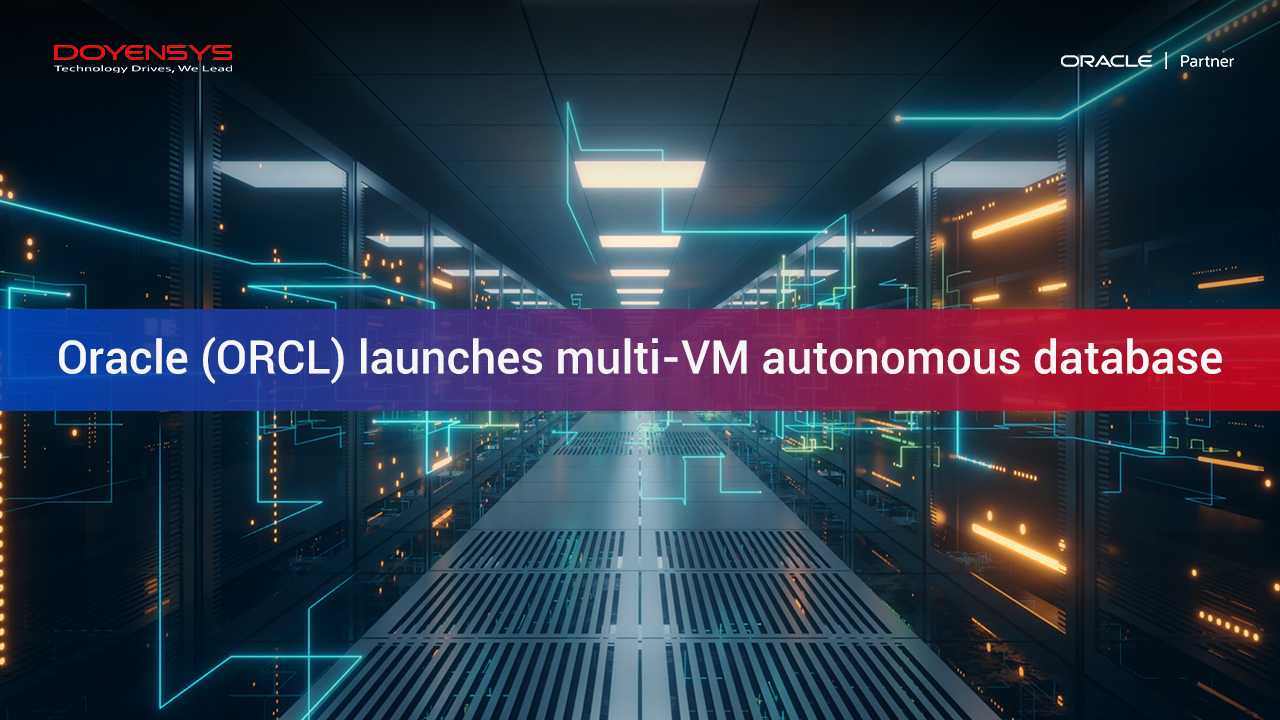
Oracle is introducing a new way for businesses to use Oracle Autonomous Database on Exadata Cloud@Customer, which takes on-premises database cloud automation to the next level by offering a full self-service database cloud with pay-per-use pricing and a very low entry point.
The new offering will enable Oracle to achieve its primary goal of resolving today’s data management issues that make modern applications and analytics difficult to run while also allowing customers to focus on their core business strategies.
Oracle enhanced the capabilities of its Exadata Cloud at Customer hardware service with the general availability of multi-VM autonomous database functionality. Oracle Cloud at Customer allows enterprises to implement Oracle Cloud Infrastructure on-premises. The approach is identical to other big cloud providers like Amazon with its AWS Outposts platform.
 How will it help customers?
How will it help customers?
Oracle’s Exadata Cloud@Customer is the world’s simplest way for clients to get cloud database benefits, including self-service API agility, a pay-per-use finance model, high availability, security, and standardization that lowers business risk.
It provides these cloud benefits to customers while remaining behind their firewalls, inside their data centers, and fully managed by Oracle through cloud-native APIs. Without changing anything at the application layer in their corporate architecture, Exadata Cloud@Customer allows organizations to upgrade their database estate and take advantage of cloud benefits while fulfilling security, governance & regulatory standards.
Customers will save money by enhancing the use of infrastructure, and Autonomous Databases will be easier to implement with the new solution launch in Oracle Platform.
For meeting corporate compliance obligations, organizations will be able to create isolated, autonomous database environments for dev-test, staging, and production that enforce different access rules, quotas, and availability policies.
Additionally, application developers will have immediate access to a self-service database application development platform that will provide mission-critical functionality while supporting all modern data types, workloads, and development styles.
The focus of the new announcement is also on productivity. The technology delivers a private database-as-a-service environment with auto-tuning, auto-scaling, and auto-management features, reducing the time and effort needed to deploy data-driven applications.
Autonomous and non-autonomous
Oracle Autonomous Database is the most technically complete and user-friendly database solution for database developers and administrators. The service provides machine-learning-driven touchless mission-critical capabilities with automatic and dynamic scaling, performance, and security.
The service is ideal for current application designs that combine numerous data kinds, workloads, and analytic functions into a single solution. The Oracle Database is run on the Exadata platform, Oracle’s on-premises hardware.
Until now, Exadata has been operating the non-autonomous version of the Oracle database rather than the Oracle Autonomous Database, which is a fully managed service.
Organizations can run different Oracle databases (autonomous and non-autonomous) on the same physical infrastructure with the new Oracle Multi-VM Autonomous Database functionalities for the Exadata Cloud at Customer.
It provides the cloud database foundation required to simplify data management across database environments and accelerate cloud migrations by allowing current applications to integrate and function in the cloud. In addition, Oracle has raised the bar for on-premises database automation by introducing a full self-service database cloud alternative.
How does a multi-VM autonomous database work?
Oracle must make it possible for its users to run various versions of the Oracle database. Hundreds, if not thousands, of Oracle database instances can be run by many enterprises with their large database deployments.
Migration from existing on-premises Oracle databases to the Oracle Autonomous Database can be a substantial problem with such big deployments. In the meantime, many businesses will be required to support and operate non-autonomous Oracle database deployments for many years.
Before the advent of Multi-VM Autonomous Database for Exadata, businesses could operate both Oracle databases. Still, it would have been more expensive if users ran the two types of databases on different hardware or cloud services. They can deploy numerous virtual machine clusters on Exadata systems thanks to virtualization.
Customers can now establish several Autonomous Exadata VM Clusters and Exadata Database VM Clusters on a single Exadata Cloud@Customer with the introduction and general availability of Multiple VM Autonomous Database.
Multiple VM Autonomous Database is a set of symmetric Virtual Machines that separate highly available Autonomous Database Service instances and can be installed alongside Exadata Database VM Clusters on a single Exadata Cloud@Customer infrastructure.
Each Autonomous VM Cluster on an Exadata Cloud@Customer supports distinct network configuration, maintenance schedule, licence type selection, and customized memory, storage, and compute allocations to develop and run Autonomous Databases.
Multiple virtual machines Customers can create separated operational environments such as dev-test, staging, and production with their access restrictions, quotas, and performance SLOs using Autonomous Database.
Final Words:
As a result, businesses can transfer and update old databases to take advantage of cloud benefits and build a self-service database application development platform that complies with corporate governance norms.
Internal developers can now create new apps employing self-tuning, self-scaling, and self-managing databases. If you’re looking for an enterprise-grade Oracle cloud provider, reach out to Doyensys, a technology services company specializing in Oracle solutions.
You may rely on Doyensys’ Oracle infrastructure for results-oriented outcomes and organizational efficiency in cloud-related services.
